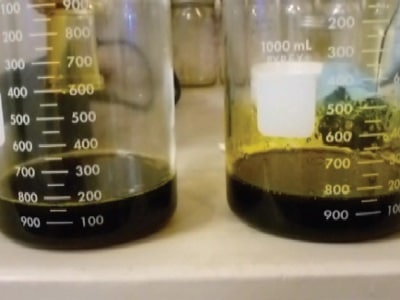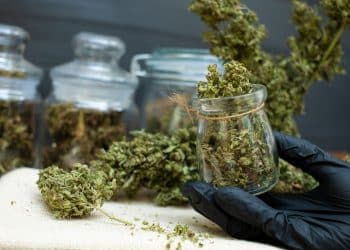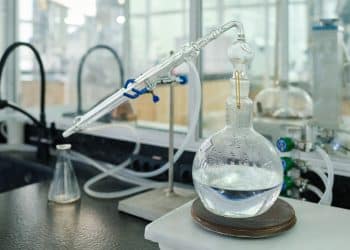Consumer interest in cannabis/hemp-derived products continues to grow. Manufacturers need a safe, consistent way to produce high-quality cannabinoid-rich oil. To satisfy this demand, companies are creating increasingly sophisticated extraction and filtration equipment. A filter press offers a way to separate desired molecules from unwanted substances like plant waxes.
There are several ways to create potent concentrates. Ethanol and supercritical carbon dioxide (CO2) extractions are two common methods. Ground hemp/cannabis is incubated with solvent before being winterized/de-waxed. Most ethanol extractors likely use cold ethanol for extraction, lessening the migration of waxes from plant to oil. CO2 extraction parameters can be tailored to limit the amount of waxes withdrawn from the biomass, but this may come at the expense of leaving cannabinoids in the raffinate. Those repurposing the waste gas seek solace in the ability to recycle the solvent routinely without generating drums of waste that must be disposed of compliantly.
Winterization and de-waxing separate unwanted lipids from concentrates. A filter press parcels the lipids and waxes from the winterized extract. This technology may also be used for post-winterization filtration, filtration of crude extract, or for further refinement, such as removing chlorophyll.
If there is biomass particulate in the oil, the post-extraction slurry can be pushed through the filter using a pressurized feed pump. Excess biomass is trapped between the “press” of the two plates, forming a cake that further filters particles. When pressure is released, the cake simply falls out with gravity. Filter presses may also be equipped with numerous filter plates.
If the lipids aren’t removed, the quality of the final product can be negatively affected. Beyond potentially adverse organoleptic properties like a vegetal taste or dark color, you’re no doubt already aware of the health hazards of inhaling lipids. Thus, winterization, de-waxing, and filtration are prerequisites for anyone making vaporizable products.
A concentrate that hasn’t been refined in this way is susceptible to “auto-buddering,” a process that turns the substance into a cloudy, buttery glob. Budder is a thick, creamy concentrate. Poor filtration leads to a product that’s not only less aesthetically pleasing but tastes worse as well. And since these products are vaporized or dabbed, the need for lipid removal is again mandatory. A lackluster winterization and filtration job may cause auto-buddering in shatter.
The filter press presents an option for those looking to scale up their winterization and post-extraction product refinement processes. Rather than using increasingly larger Buchner funnels, which can be impractical when scaling and can ritually clog, filter presses offer a closed system, less manual and time-consuming labor, and the ability to increase throughput.
Image source: Lab Compare












